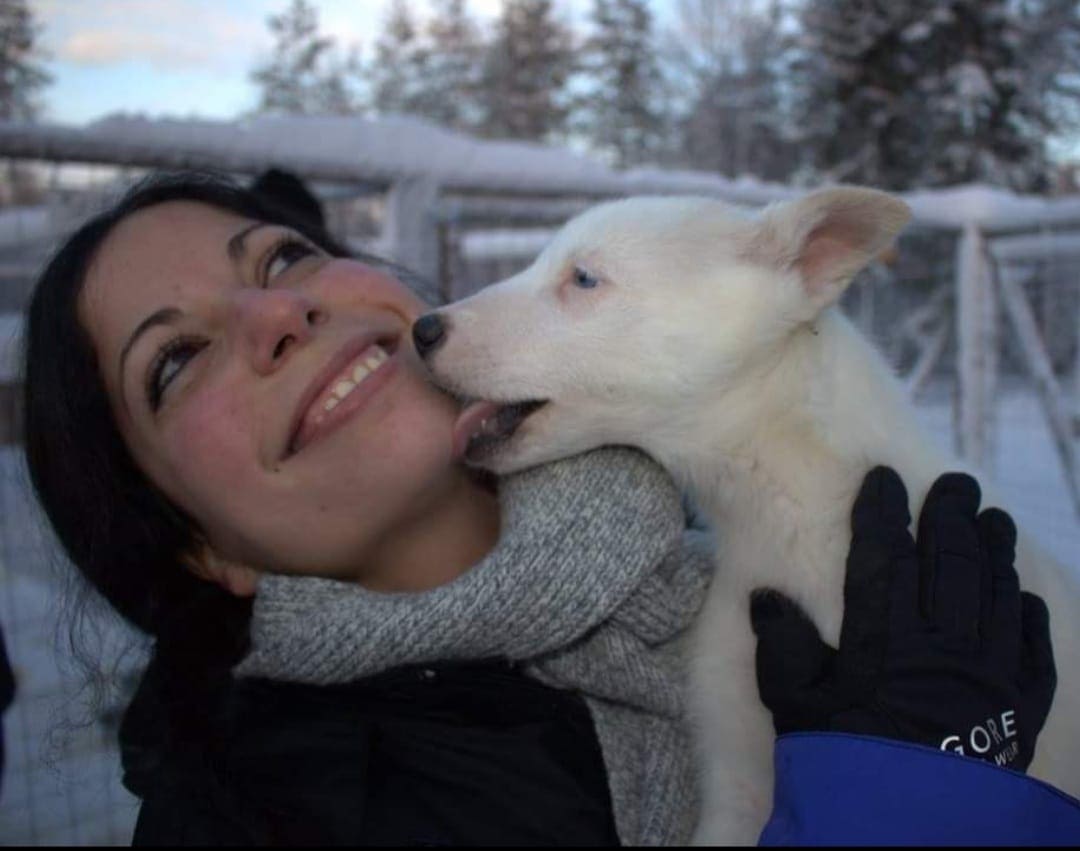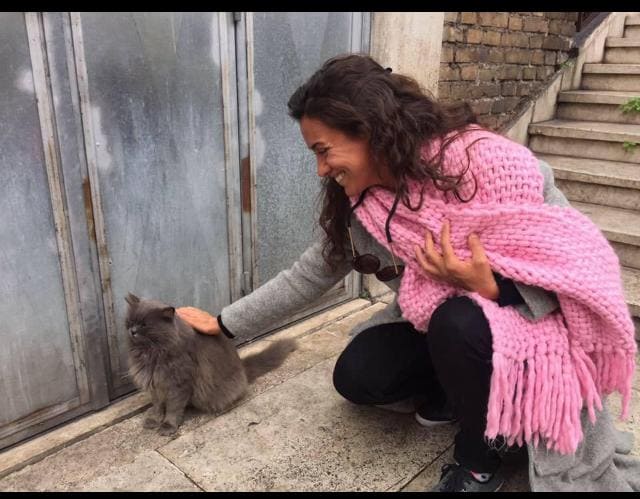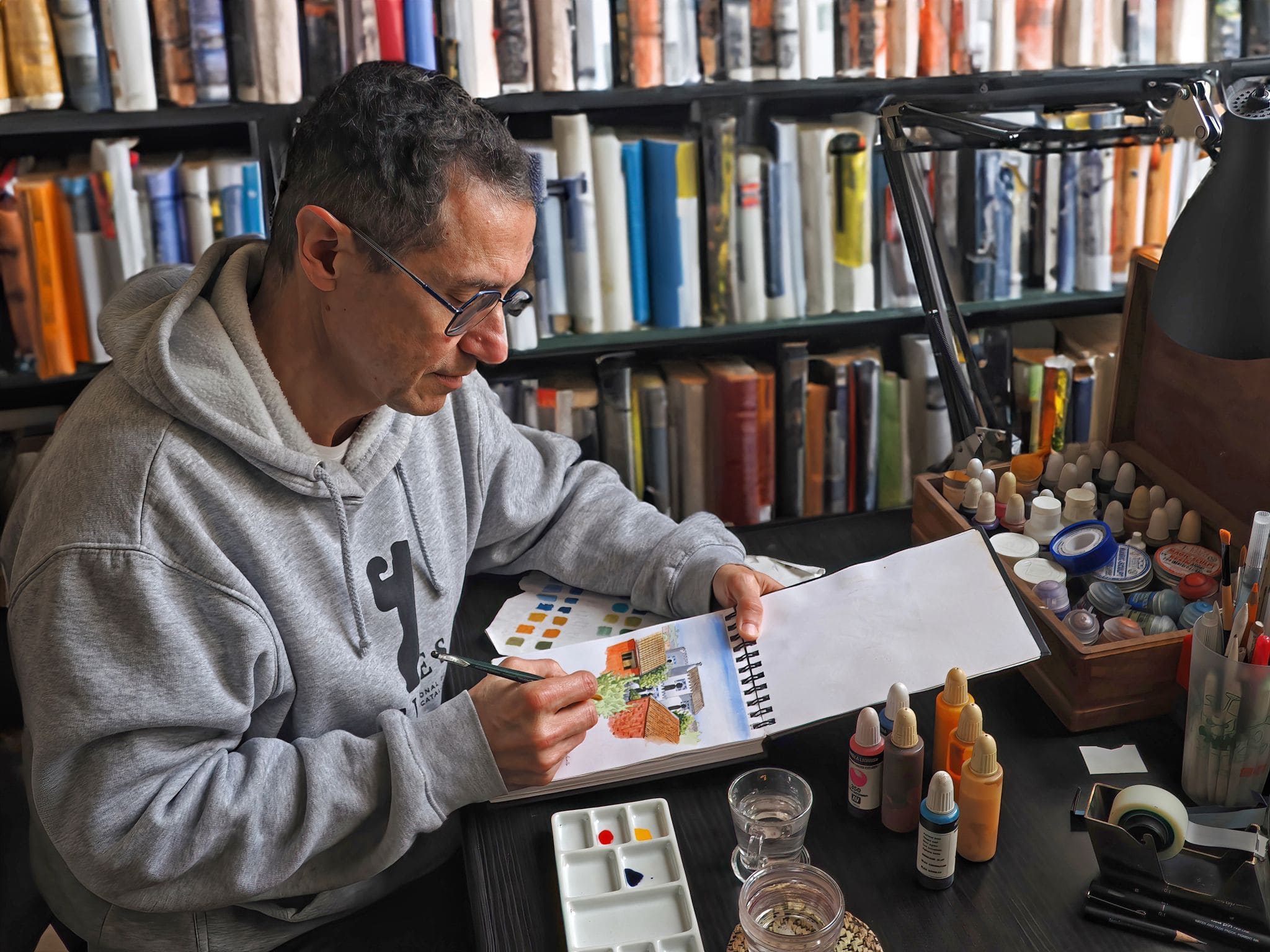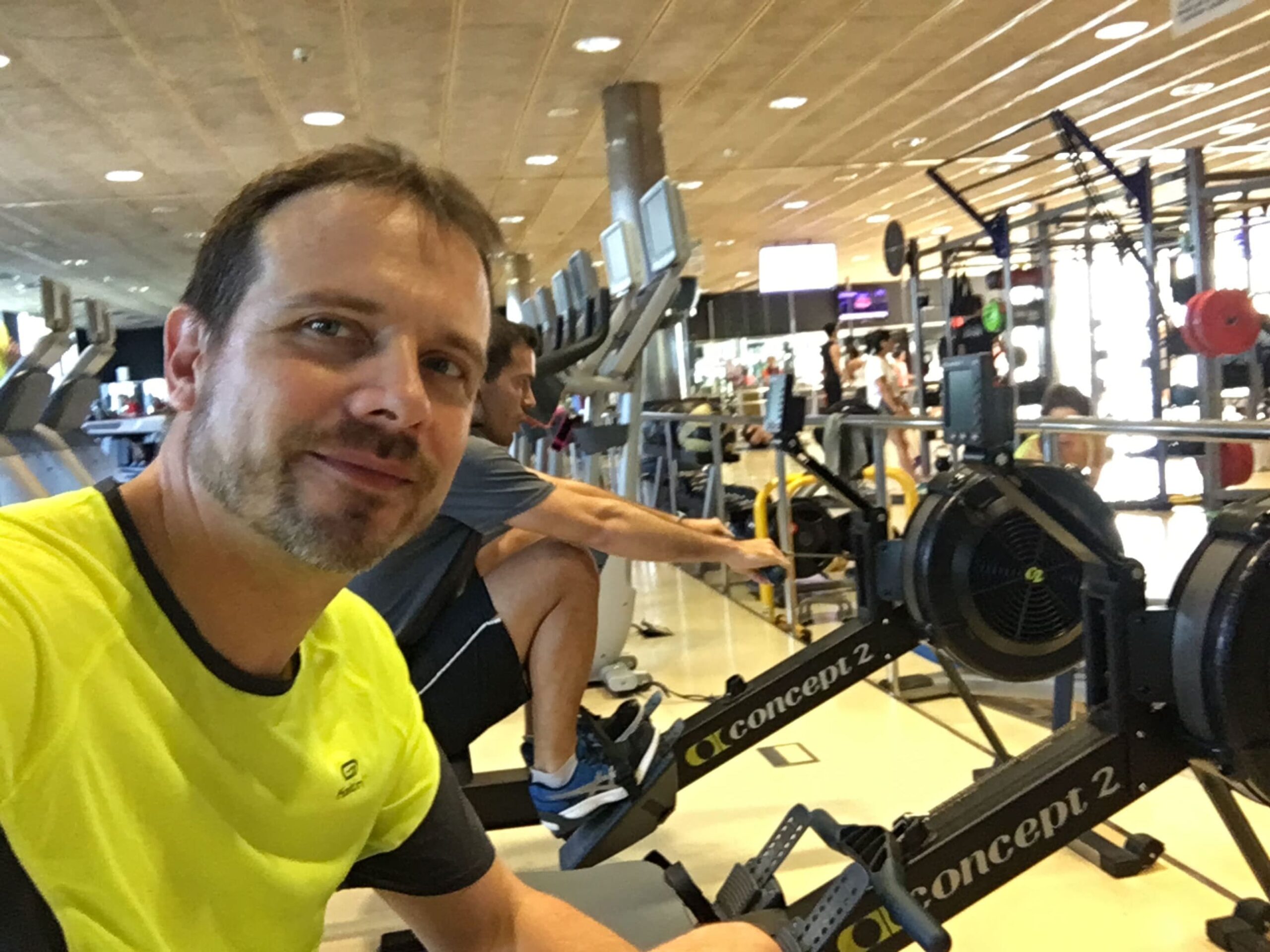
Whitening
Dental whitening
Would you like to have a whiter, cleaner and more natural smile?
After several years perfecting the technique, we have achieved an extraordinary professional teeth whitening system. With the new protocol we can obtain, in 95% of the cases, a final shade lighter than the B1 (the brightest one) of the Vita natural dental guide. In addition, the method offers the following advantages:
- Exclusive enhanced technique
- 95% of cases with optimum results
- No need to change diet or habits
- Long-term result
The system combines different optimized steps to obtain the best final result.
The treatment consists of three visits. At the first visit we will scan your teeth creating 3D digital models and we will give you a toothpaste that must be used like any normal toothpaste, 3 times a day during the entire procedure. On the second visit we will give you all the whitening gels and our special custom-made, double-layered trays, with peripheral sealing, which allow us to achieve a much better result than that obtained with conventional techniques and using less concentrated products. During 2 weeks, you have to use the trays during the night. On the third visit we will carry out a whitening fixation session at the clinic. At this visit we will apply a new bleaching gel, activated with a professional unit that has won the award for the best professional teeth whitening system in the world. The visit lasts 1 hour and is relaxing, with background sound music.
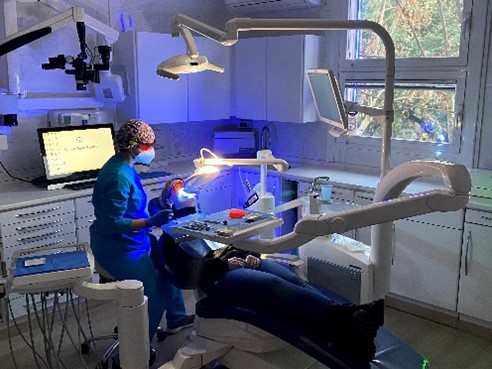
Karo

before

after
Videotestimonial
Merche

before

after
Videotestimonial
Leticia

before

after

Videotestimonial
Jessica

before

after

Videotestimonial
Whitening of 1 single tooth
We have also developed an improved technique for individual bleaching of 1 single darkened tooth. The technique is described in our book published in 2020 and allows the natural colour of the tooth to be restored in just a few days and without any discomfort.
Zhana
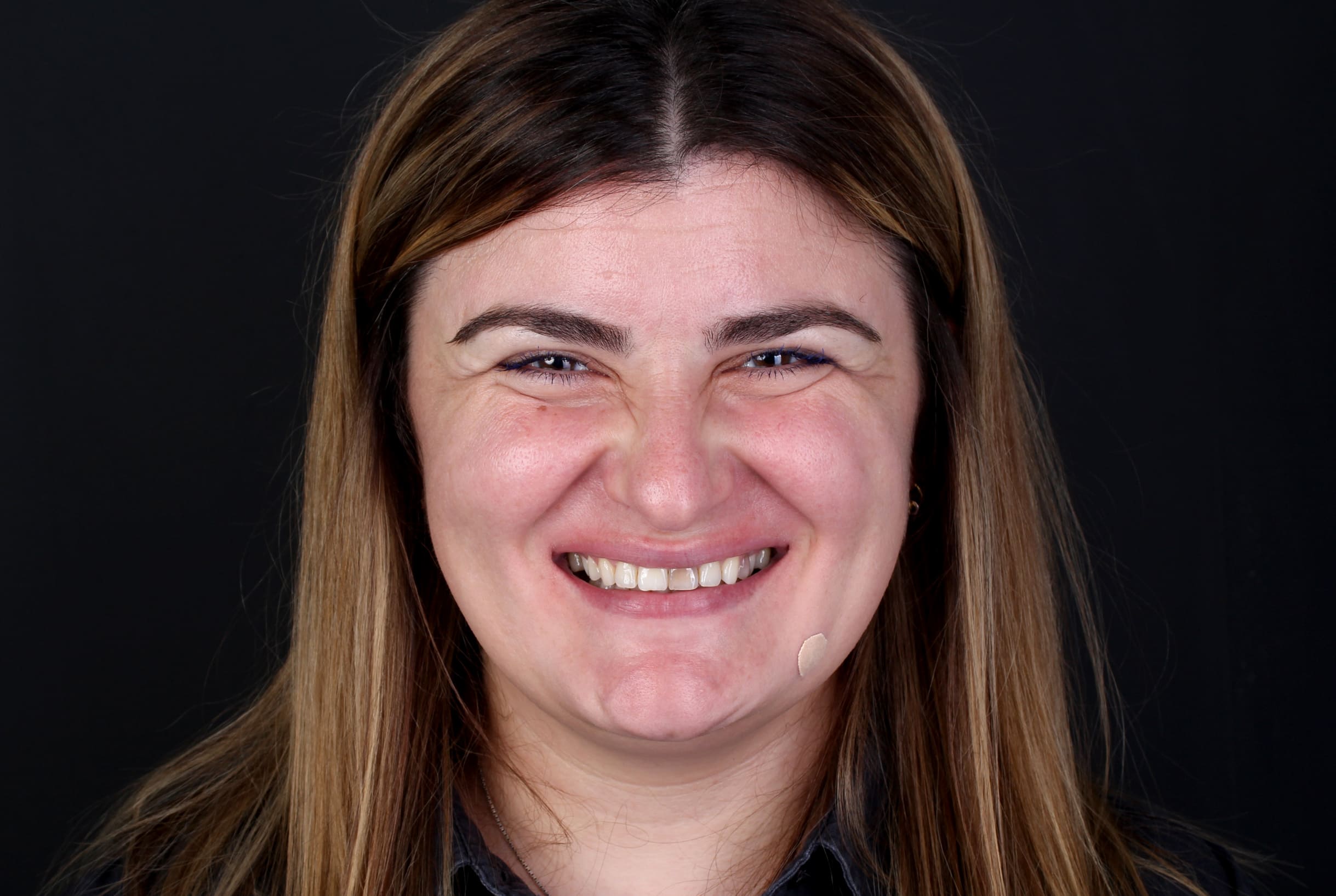
before
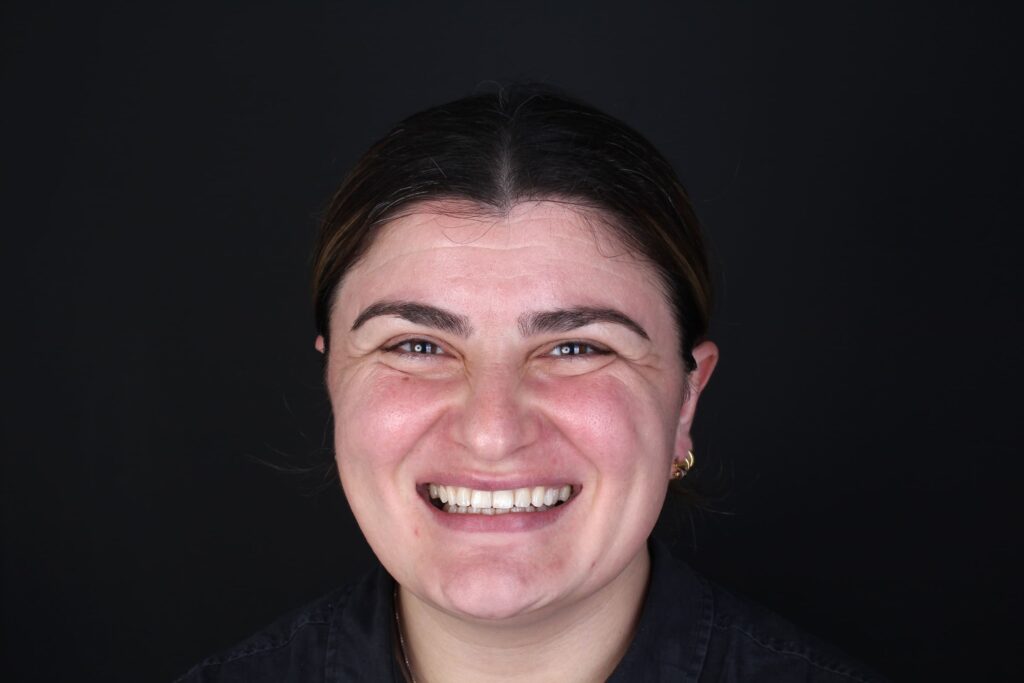
after
Frequently Asked Questions About Teeth Whitening
Our exclusive professional tooth whitening allows us to lighten the natural tonality of your teeth by several shades. Depending on the initial colour, the type of staining, the technique and the materials used, etc., a greater or lesser change of colour can be obtained. In 95% of our cases we can achieve a final colour equal to or brighter than the B1 shade from the Vita guide.
Grayish or brown stains caused by tetracyclines or very translucent teeth do not usually respond as well as teeth that are simply somewhat yellowish, which are the ones that allow us to achieve greater changes.
Only natural teeth can be whitened, not restorations (fillings, caps, etc.).
Normally there is no discomfort. A certain sensitivity (especially to hot/cold) may appear during the procedure. This sensitivity disappears at the end of the whitening.
We offer special procedures for the prevention and treatment of dental hyperesthesia during bleaching for those most sensitive patients.
Our professional whitening does not harm or wear down or weaken your teeth in any way. The gel acts by releasing oxygen between the prisms of dental enamel wich eliminates chromogens, (the molecules that stain your teeth). Some home made or online sales systems can be abrasive or erosive for your teeth, and the results they obtain are very limited or none at all.
There are different types of whitening:
- Internal whitening (in devitalized teeth), where the whitening agent is placed inside (in the pulp chamber). Whitening takes place from the inside out.
- External whitening: To obtain the best results we combine the treatment at home with a session at the clinic.
There are different whitening gels. With or without peroxides, with or without remineralizing agents, monocomponent, etc. There are also many different types of activation systems for the fixation session at the clinic:
By heat
By LED light of determined wavelength.
By Plasma Arc
By Laser
Within each type there is a variety of qualities. The most effective activation systems can cost (to the clinic) 10 times more than the simplest systems, but they are also much more effective and produce less discomfort.
It is very useful for the clinic to have different systems that allow us to achieve the best result in each case (there are those who require maximum whitening efficiency, there are others who have very sensitive teeth and require a slower procedure, which does not produce sensitivity, etc.).
There are also different ways of manufacturing ambulatory whitening trays. Our propietary system uses trays created with a peripheral sealing system that does not allow the gel to escape or the saliva to enter the tray while the patient is wearing it. This significantly improves efficiency and results.
The whitening gel, usually through oxygen, breaks the long chain molecules, which are dark, in other short chain molecules that are lighter. This not only neutralizes stains and residues caused by certain medical treatments, but also lightens the natural tooth tone. Among other products, this gel contains hydrogen peroxide.
With the innovative system we use, it is not necessary to follow any very strict guidelines. We recommend that, during all phases of whitening, care should be taken not to eat foods that may dye the enamel very much, such as coffee, tea, tobacco, red wine…
Some patients may experience side effects of teeth whitening, such as tooth sensitivity, but these usually disappear within 2-3 days.
With our maintenance protocol we can easily achieve a long term duration of the colour achieved.
It is as simple as it is effective. Our whitening system consists of using a product during 15 days of application at home to end with an hour and a half session in the clinic. The results are amazing!
The results leave a very beautiful and natural shade to your teeth. The bleaching process progresses slowly over the course of 2 weeks, so if you consider that the color obtained is bright enough, you can stop it at any time. (Although this question is frequently asked, at the end of the day no one has yet decided to stop the whitening treatment before finishing it.)
Each case has to be studied individually, but the complete treatment following this technique in a normal case, including the three visits, all products necessary for the home phase and the clinical session costs approximately 750 € and includes the toothpastes and desensitizing liquids, photographs and instructions for long-term maintenance.
Teeth whitening is one of the dental treatments that must be carried out by a professional dentist in dental clinics. At Clínica Dental Padrós Paral.lel, in Av. Paral.lel, 84 in Barcelona we have all the most advanced teeth whitening systems (high performance and high quality systems of Led, Laser, Plasma Arch, sealed trays, internal, external systems, etc.), which allows us to choose the most suitable in each case and allows us to adjust it according to its evolution.

